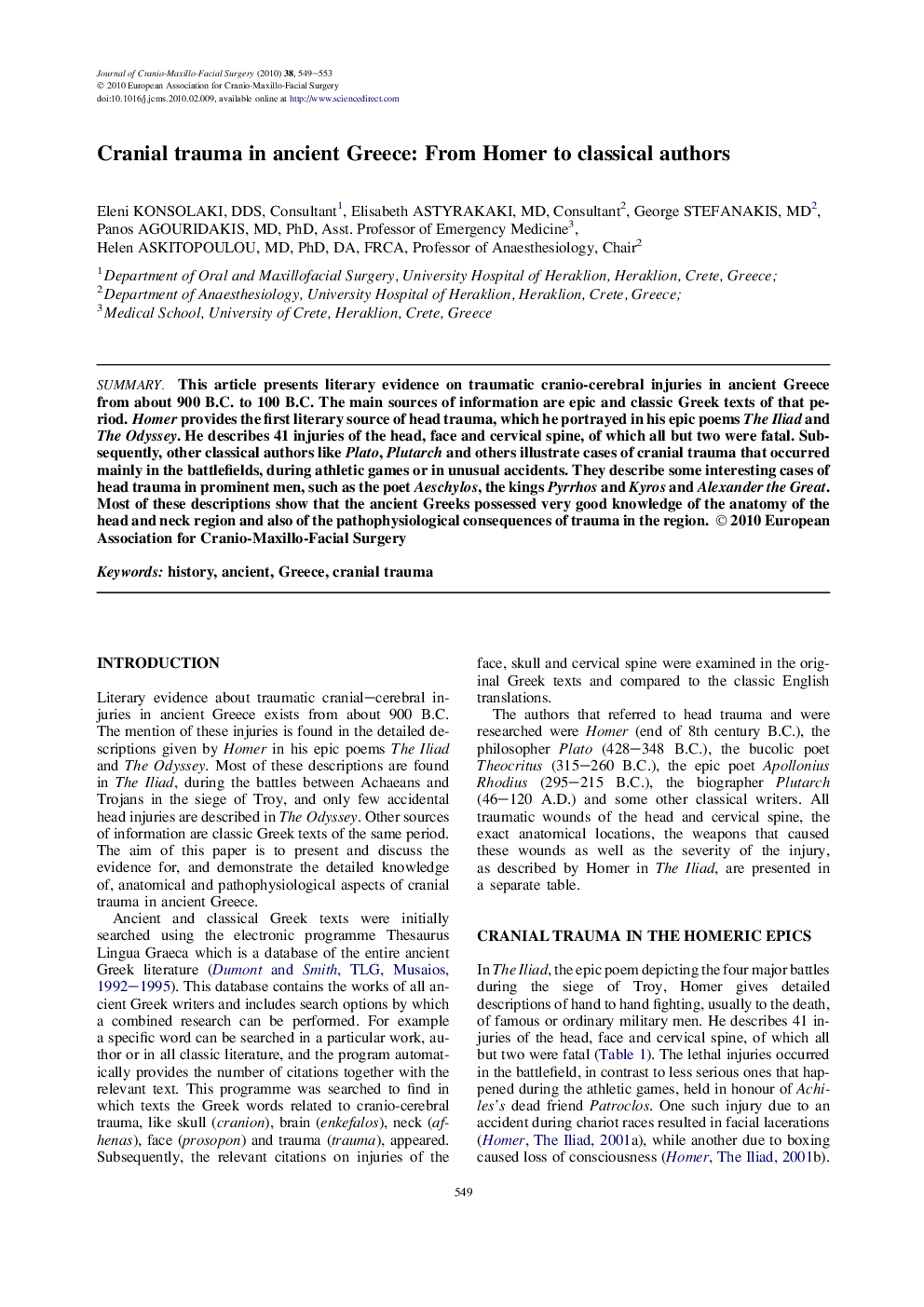| Article ID | Journal | Published Year | Pages | File Type |
|---|---|---|---|---|
| 3143755 | Journal of Cranio-Maxillofacial Surgery | 2010 | 5 Pages |
SummaryThis article presents literary evidence on traumatic cranio-cerebral injuries in ancient Greece from about 900 B.C. to 100 B.C. The main sources of information are epic and classic Greek texts of that period.Homer provides the first literary source of head trauma, which he portrayed in his epic poems The Iliad and The Odyssey. He describes 41 injuries of the head, face and cervical spine, of which all but two were fatal. Subsequently, other classical authors like Plato, Plutarch and others illustrate cases of cranial trauma that occurred mainly in the battlefields, during athletic games or in unusual accidents. They describe some interesting cases of head trauma in prominent men, such as the poet Aeschylos, the kings Pyrrhos and Kyros and Alexander the Great. Most of these descriptions show that the ancient Greeks possessed very good knowledge of the anatomy of the head and neck region and also of the pathophysiological consequences of trauma in the region.
